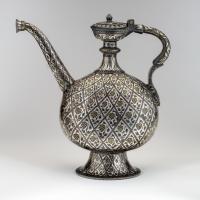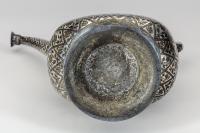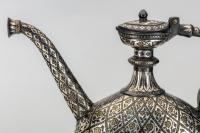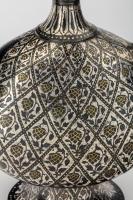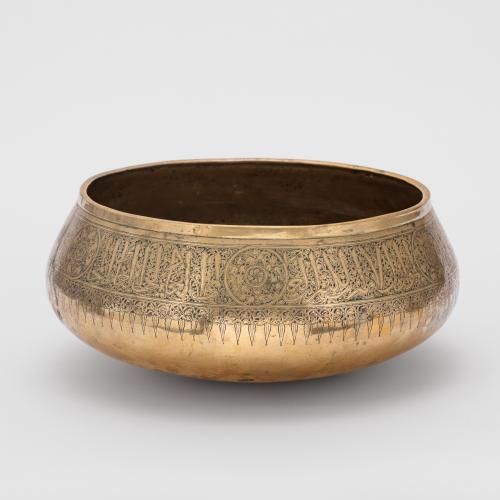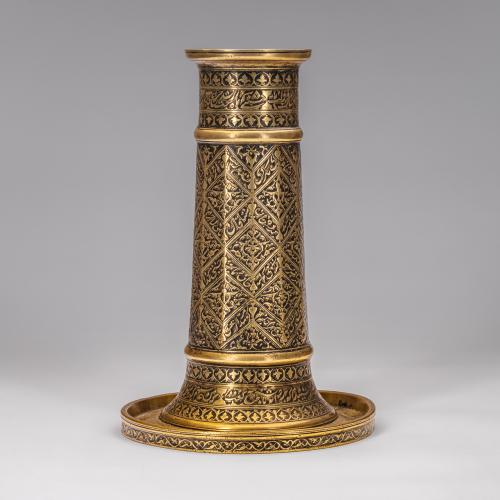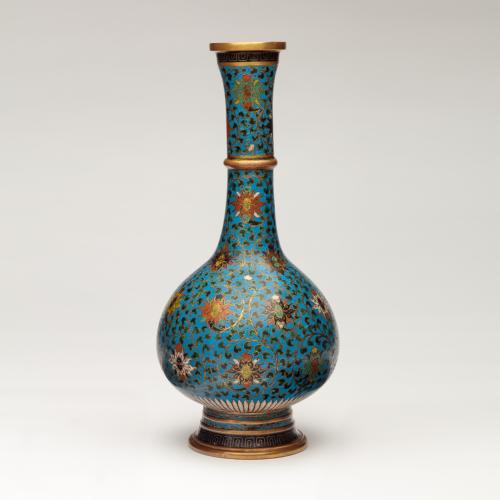
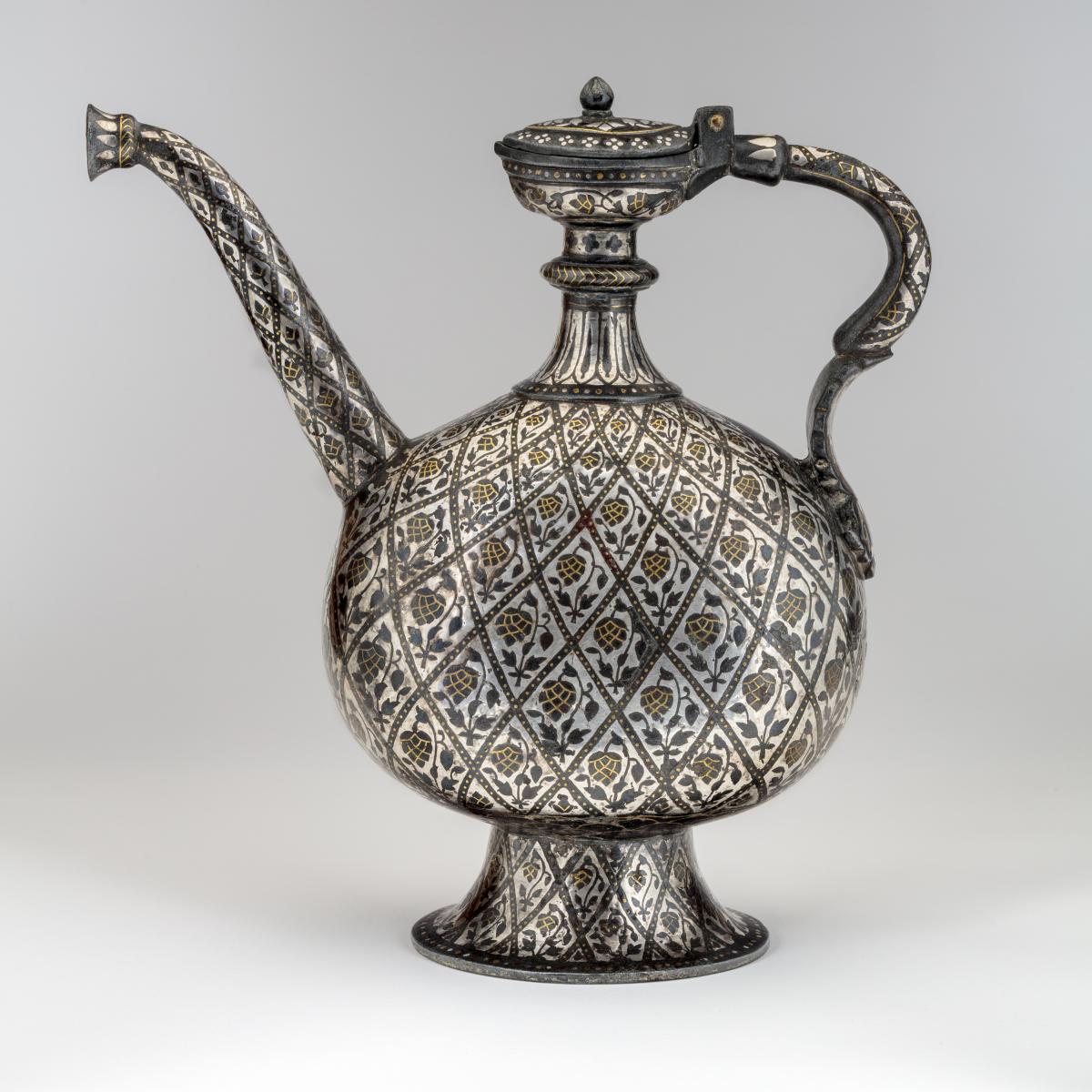
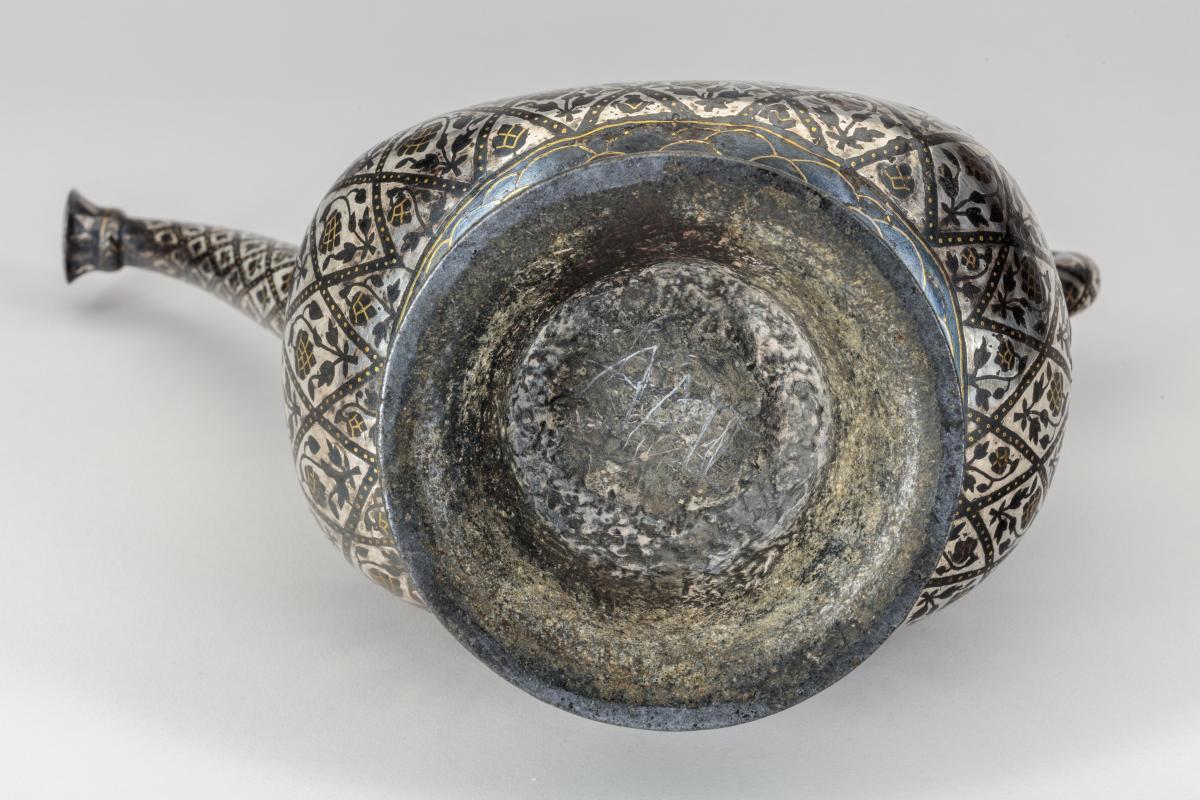
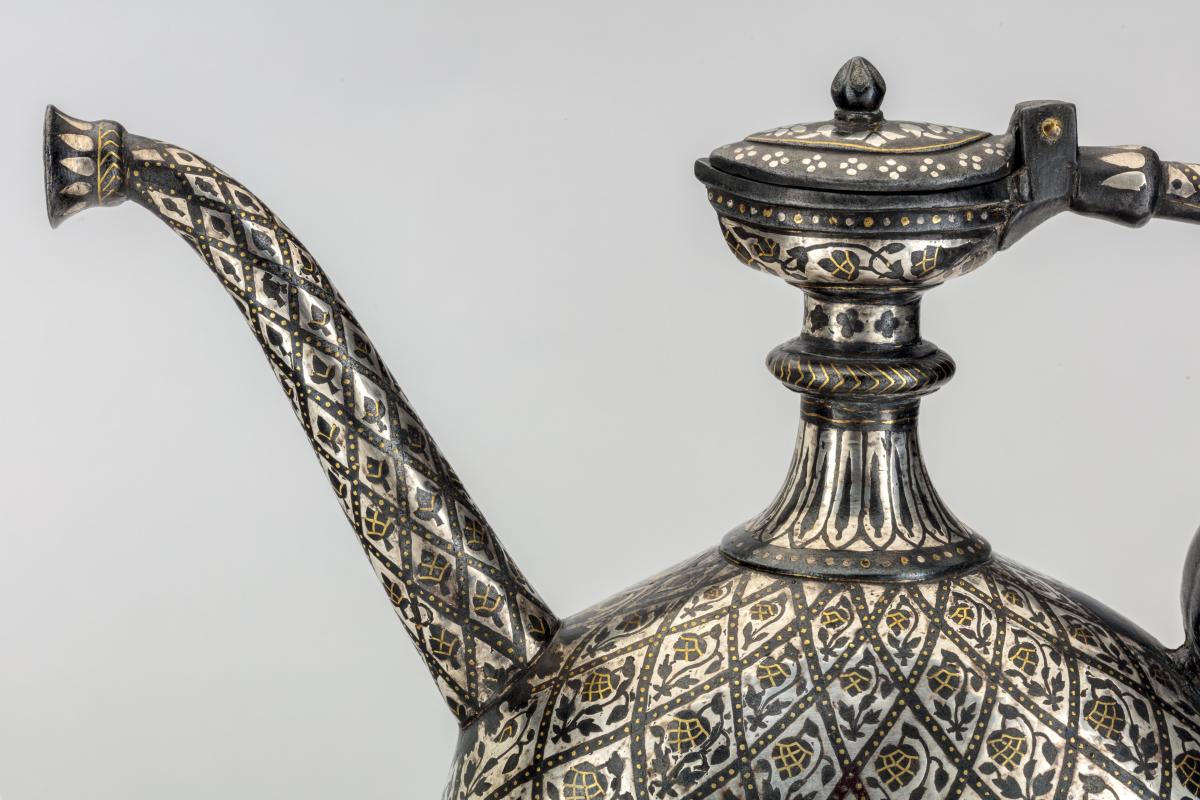
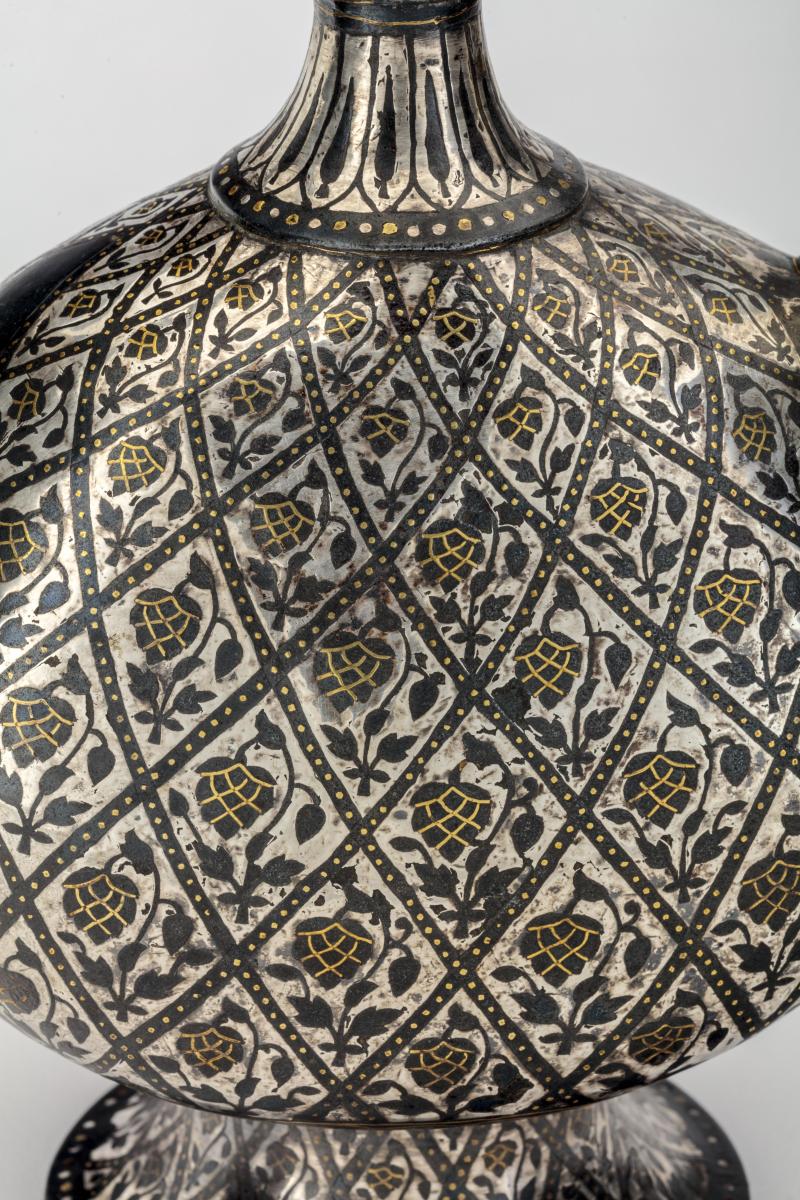
Price on application
This object is eligible for a Certificate of BADA Provenance
The BADA Standard
- Since 1918, BADA has been the leading association for the antiques and fine art trade
- Members are elected for their knowledge, integrity and quality of stock
- Our clients are protected by BADA’s code of conduct
- Our dealers’ membership is reviewed and renewed annually
- Bada.org is a non-profit site: clients deal directly with members and they pay no hidden fees
Silver Overlay Bidri Ewer.
India, 17th century.
Silver and brass overlay.
26cm high.
Provenance: UK private collection.
Rising from a circular foot through the round bulbous belly, this ewer has a tapering neck with “S” shaped handle and slightly curved spout. It has a pronounced collar that connects to a flaring mouth. The ewer retains its original, hinged lid which has a bud-shaped finial. The decorative scheme comprises of an overall pattern on the body made up of intersecting dark straight lines with silver dots, which create lozenge shapes that are inlaid with silver. As the lines extend to the wider circumference part, the lozenge shapes also become bigger. Inside each silver lozenge are the same stylised flower motif highlighted by brass inlay. The decoration on the foot and spout are identical to that of the belly. The neck and mouth have more floral and leaf silver inlaid motifs, while the pronounced collar is of silver inlaid chevron pattern. The form of the object, its high-quality craftsmanship, as well as stylistic comparisons with several Bidri ewers, including a set of 17th century Bidri ewer and basin (Zebrowski, p.168, cat.238), indicate our ewer was produced in the 17th century.
First appeared in the early 17th century, the origin of the bidri technique is so far uncertain. An account suggests the technique was introduced to the Bahmanī kingdom of the Deccan from Iran, namely Bijapur. Although by the 18thcentury, many bidri-producing centres can be identified, it is still difficult to assign most objects to a specific production centre. Bidri is the adjectival form of Bidar, a city that was a part of the Bahmanī kingdom and also where the first reference to this craft was documented. Bidri objects are mainly composed of zinc, a soft metal that can be easily engraved to receive complex inlay patterns. Once the object is engraved, the piece would be inlaid of silver or brass, sometimes both.
Reference:
Zebrowski, Mark. Gold, Silver & Bronze from Mughal India. Gold, Silver and Bronze from Mughal India. London: Alexandria Press in association with Laurence King, 1997.
Stronge, Susan. Bidri Ware: Inlaid Metalwork from India. London: Victoria & Albert Museum, 1985.
The BADA Standard
- Since 1918, BADA has been the leading association for the antiques and fine art trade
- Members are elected for their knowledge, integrity and quality of stock
- Our clients are protected by BADA’s code of conduct
- Our dealers’ membership is reviewed and renewed annually
- Bada.org is a non-profit site: clients deal directly with members and they pay no hidden fees


